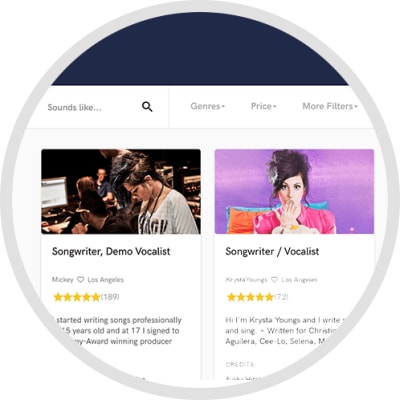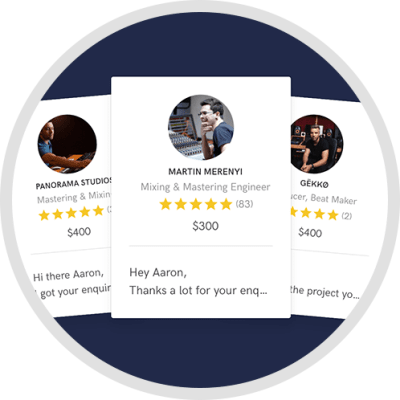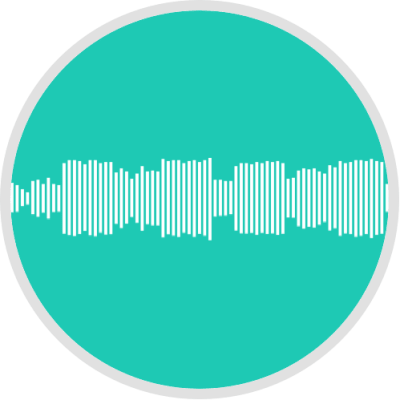
Tech House & Techno mixing/mastering engineer with releases on KIK DRM, Slyckr, Blue Soho & Purple Tea. Toolroom Academy grad helping artists get their tracks release-ready for clubs, streaming, and labels. Clean, punchy, and polished — no fluff, just results.
I’m Jaylen Hart — a mixing and mastering engineer who lives and breathes electronic music. I specialize in Tech House, Techno, and club-ready tracks that sound just as powerful in a DJ set as they do in your headphones. My goal is to help artists take their track from almost there to fully release-ready — clean, loud, balanced, and ready for streaming, clubs, or Beatport drops.
I’ve worked with labels like KIK DRM, Purple Tea, Blue Soho, and Slyckr, and I’m a graduate of Toolroom Academy. My approach is honest, collaborative, and focused on results. I don’t follow trends or YouTube tricks — I listen, ask the right questions, and use what makes sense for your track.
Sometimes that means a final master. Sometimes it’s a stem mixdown. Either way, I’ll give your track a full listen and share notes before I start. If something needs fixing upstream, I’ll let you know — I want you to feel confident, not second-guessing. My studio is acoustically treated and tuned, and I’ve spent thousands of hours in it fine-tuning mixes that translate everywhere.
If you’ve got a track that’s close — and want someone who’ll treat it with care, clarity, and a DJ’s ear — I’d love to help.
Send me an email through 'Contact' button above and I'll get back to you asap.
Languages
- English
Interview with Jaylen Hart
Q: Tell us about a project you worked on you are especially proud of and why. What was your role?
A: One project I’m especially proud of is Generation, a track I released under my artist alias. It was a true labor of love — from the initial analog drum recordings to the final master. I co-produced it alongside my friend, and we really pushed each other creatively to shape something that felt rooted in classic dance music but updated for today’s clubs and festivals. I handled the entire mix and master myself, making sure the low end hit hard without sacrificing clarity — especially through the break and drop, which are designed to shift the energy of a DJ set. It’s the kind of track I always wanted to hear on a big system, and seeing it get played out and supported has been an incredibly rewarding experience.
Q: What are you working on at the moment?
A: Right now, I’m juggling a few client projects, some new personal tracks, and a co-production with a longtime friend. I also recently wrapped up some work with a vocalist that I’m excited about. Outside of that, I’m focused on building up my label’s release process — finding great artists and creating ways to support and promote them properly.
Q: Is there anyone on SoundBetter you know and would recommend to your clients?
A: Lil Cross is a great rapper - highly recommend if you want a creative songwriter involved in your music production process.
Q: Analog or digital and why?
A: I work mostly in-the-box with some select outboard gear for recording and processing. These days, digital gives you the flexibility, recall, and clarity needed for modern production. Unless you’re specifically chasing a niche analog sound, I believe in using the best tools of this era — the ones that help us move fast and sound great.
Q: What's your 'promise' to your clients?
A: You’ll get a track that’s passed every one of my quality checks and is fully prepped for whatever you’ve got planned — DJ sets, streaming, sharing with your fans, label submissions — I’ll make sure it’s ready to go and sounding the best it possibly can.
Q: What do you like most about your job?
A: I get to help artists bring their music into the world. That’s huge. Every project teaches me something new — whether it’s a technique or a totally fresh approach from the artist I’m working with. Showing up to the studio every day is a joy and a privilege. It never gets old.
Q: What questions do customers most commonly ask you? What's your answer?
A: “How can I make this sound pop more?” “Is my mix balanced?” “Do my levels seem right?” Here’s the thing: a lot of those are stylistic choices, not hard rules. What works for one track might not for another. My job is to help guide those choices — not impose a formula — and make sure your mix lands how you want it to.
Q: What's the biggest misconception about what you do?
A: A lot of people think mastering is just “making it louder.” Truth is, there’s a lot more going on behind the scenes — from EQ adjustments to stereo imaging, final polish, and making sure the track is optimized for its destination (club, streaming, or anywhere in between). Another common one? Thinking I’m here to reshape the creative direction of your song. I’m not. I’m here to bring out what’s already there — to elevate, not rewrite.
Q: What questions do you ask prospective clients?
A: I usually ask for your track and a reference — that’s really it. If you’ve got a clear vision or intention for the track, I’d love to hear that too. But if all you have is a song and a vibe, that works just fine.
Q: What advice do you have for a customer looking to hire a provider like you?
A: It doesn’t need to be complicated — and it’s not supposed to feel intimidating. Sometimes I’m giving a track that final stamp of approval, and other times I’m making more technical adjustments to help it really shine. Either way, the goal is the same: to make the music sound like you envisioned. The best working relationships come from mutual trust and open, honest feedback. If you’ve got a note — even if you think it’s “dumb” — share it. I want you to feel safe speaking up, and I’ll do the same. If you’re looking for a pro who’s not chasing YouTube trends or one-size-fits-all advice, I’ve got you.
Q: If you were on a desert island and could take just 5 pieces of gear, what would they be?
A: • Ableton Push — for flow and creativity • MacBook Pro — my all-in-one production machine • Sennheiser HD650s — headphones I trust completely • Zoom field recorder — to capture the world around me • Jackery battery bank — because even in paradise, power matters Also… probably a notebook for sketches, lyrics, and waveforms doodled in the sand.
Q: What was your career path? How long have you been doing this?
A: Music’s been part of my life since I was a kid helping my dad in his studio. I started out designing album artwork, then picked up drums, and eventually moved into hip hop production. That foundation gave me an ear for rhythm, tone, and storytelling through sound. More recently, I completed the Toolroom Academy program, which helped me bridge the gap between creative instinct and technical precision — especially for producing, mixing, and mastering tech house. About five years ago, I made the decision to pursue music full time. I’m not there yet, but every track brings me closer.
Q: How would you describe your style?
A: My style is clean, intentional, and always in service of the track. I’m not here to add a signature “sound” unless it’s needed — I’m here to unlock what’s already in your song and help it land with clarity, punch, and emotional weight. Whether we’re chasing something bold and festival-ready or deep and atmospheric, I shape the mix and master around your intent, not mine.
Q: Which artist would you like to work with and why?
A: I’d love to work with Metro Boomin and 21 Savage — their ability to make dark, infectious grooves feel effortless is something I’d love to be part of, especially on a personal project. On the flip side, someone like Ava Max would be a dream collaborator for my trance and techno-influenced tracks. Her voice cuts through and elevates a track in such a powerful way. I’m drawn to music that’s catchy, emotional, and vocally driven — that moment when a vocal hook locks in and gives you chills? That’s what I live for. I see my role as supportive — not reshaping your vision, but amplifying the emotion, the movement, and the details that are already there.
Q: Can you share one music production tip?
A: Don’t tinker just to tinker. Go into the studio with a plan. Organize your samples, build workflows that support your creativity, and treat the process like a journey through stages: explore, define, arrange, mix, master, release, promote. Give yourself room to move through each phase without getting lost in the weeds. Also — don’t sleep on the importance of clean source material. Trashy samples or poorly recorded vocals can make or break a mix. And if you haven’t tried it yet, Roar is a beast for adding movement and tone to dry samples or analog recordings — mid/side, parallel, whatever you throw at it, it just works.
Q: What type of music do you usually work on?
A: I specialize in electronic music — mostly Tech House, Techno, and anything you might hear at a festival or club. I also work with Rap and Trap artists who want that same punch and polish in their mixes. If your track is meant to rattle a Funktion-One rig or get stuck in someone’s head after a 3am set, you’re in the right place.
Q: What's your strongest skill?
A: Stem mixdowns and EQ are where I shine — dialing in the character of a mix through leveling, subtle saturation, and loudness that feels competitive but natural. I’ve had clients say my instincts and ears are among the best they’ve worked with, and I don’t take that lightly. If someone handed me a track cold, the first thing I’d do is listen — fully, start to finish — and write down what I hear, what feels good, and what might be holding it back. That first pass is everything
Q: What do you bring to a song?
A: I go to a lot of festivals and club shows — and that experience absolutely shapes how I approach mixing and mastering. I know what sounds move a dancefloor, what builds tension in the right ways, and how to get your track to land in the ears and the body. Whether it’s funky and weird or bold and heavy, I have the ears to help your track hit where it needs to. Sometimes it’s as simple as realizing your kick is muddying up the whole mix or a loop is pulling everything slightly off-kilter. I stay objective, but always with the vibe of the track in mind. That’s why I ask for references — not to copy, but to better understand your intent.
Q: What's your typical work process?
A: When you send me stems or a bounce, I start with a focused listen — pen and paper in hand — and write down what I hear, feel, and notice. If the track’s ready to go, I’ll say so. If I spot something that could be tightened up before I start mixing or mastering, I’ll share that feedback clearly and constructively. I love when artists send references — it helps me understand your sonic world. My approach is to stay transparent, communicative, and objective. I’m not here to impress you with “tricks.” My job is to serve the song, not my ego. I’ll always stand behind my work, but I also encourage feedback. If something doesn’t feel quite right, say so — this is your track, your name, and your sound. I’m here to help it shine, plain and simple.
Q: Tell us about your studio setup.
A: My setup is dialed in around one goal: hear it clearly, and make decisions that matter. I’ve spent thousands of hours fine-tuning my room with sound treatment and dual near/far field monitors, so I can fully trust what I’m hearing. This helps me catch mix issues early, especially with bass and stereo spread. I mostly work in-the-box, combining trusted stock tools in Ableton with more surgical plugins like Eventide Split EQ and Trackspacer when needed. Every choice I make is based on what helps the track — not what looks fancy in a plugin chain.
Q: What other musicians or music production professionals inspire you?
A: I find inspiration all over — from the precise energy of Enrico Sangiuliano, to the glossy, emotional depth of Kacey Musgraves’ production team, to A.G. Cook and the brilliant chaos he brought to Charli XCX’s sound. I also admire engineers like Stefan Brown at Abbey Road, whose genre-spanning work reminds me that great mastering is about understanding intention. One of my favorite moments in any track is the quiet that comes after tension — that breath before the next drop, the stillness after a build. It’s something you feel in your chest at a festival or in your headphones alone at night. That contrast is what makes a great mix memorable.
Q: Describe the most common type of work you do for your clients.
A: Most of the artists I work with are getting ready to release their track — whether it’s landing on Spotify or putting it up on Beatport to get DJ support. They’ve put in the work, but they want to make sure their song sounds right everywhere and hits the way it should. A lot of people wonder, Are my levels right? Does this feel finished? Sometimes that means a clean master is enough — other times, it takes a stem mixdown + master to really bring it to life. I help make that call and get the track over the finish line. There’s no cookie-cutter chain here — I treat each track like its own puzzle and only reach for the tools that actually serve the song. I’m not here to change your idea, just make sure it sounds the way you meant it to. Plus, I’ll handle formatting and final cuts so your track’s ready for whatever platform it’s headed to.

I was the Mixing and Mastering Engineer in this production
- Mastering EngineerAverage price - $125 per song
- Mixing EngineerAverage price - $400 per song
- ProducerContact for pricing
- EditingContact for pricing
- Post EditingContact for pricing
- Sound DesignContact for pricing
Mastering and Mixdown service includes preliminary listening evaluation, one round of revisions, exported in two audio formats of your choice. Turnaround is dependent on the project details.
- JBL 4312 Studio Reference Control Monitors
- GIK Acoustics Sound Treatment
- CLA-200 Reference Amplifier
- Moog Sub37
- Push2
- Ableton 12
Master (single track) $100 • Stem Mastering (includes mixdown and master for up to 5 stems) $400



